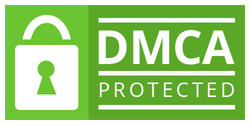
The YouTube Partner Program (YPP) is crucial for creators and marketers who rely on video content to drive revenue. Recent policy and eligibility updates have reshaped how channels monetize, and savvy marketers need to understand them inside out. Monetization updates and program reforms – from lowered thresholds to stricter content rules – directly impact campaign planning and ROI. As a leading Digital Marketing Agency in Noida and video marketing specialist, we monitor these shifts closely. In this article, we break down the changes to YPP, explain their significance for video marketing agencies and brands, and answer common questions. We focus on the details marketers need to adapt strategies and keep revenue flowing.
The YouTube Partner Program allows eligible channels to earn money from ads, subscriptions, and other monetization features. Joining YPP unlocks multiple revenue streams (ads, YouTube Premium share, fan-funding features like Super Chat and memberships, and Shopping features) and gives access to Creator Support. To qualify, channels must adhere to YouTube’s monetization policies and meet subscriber/views thresholds. These rules are constantly evolving. Video marketing agencies must align client content with YPP requirements to maximize ad revenue and brand visibility on YouTube. Staying informed of policy updates is critical.
YouTube introduced new Base Terms and optional modules (Watch Page, Shorts, Commerce) to give creators flexibility. Accepting these modules is now a prerequisite to earn ad revenue on long-form videos and Shorts. Channels must accept the Shorts module to share in Shorts feed ad revenue.
YouTube expanded YPP access by lowering entry requirements for new creators. Channels can apply to the expanded YPP with just 500 subscribers plus either 3,000 watch hours or 3 million Shorts views. This grants earlier access to fan-funding features and select Shopping capabilities.
Starting February 1, 2023, ads between Shorts can generate revenue for participating channels. Creators must opt into the Shorts Monetization Module and accept the new YPP terms to access this stream. This opens a new channel for ad revenue, provided channels meet eligibility.
Effective July 15, 2025, YouTube will enforce stricter criteria on what counts as original and authentic content under YPP. Channels relying on mass-produced, repetitive, or low-effort formats – like unedited compilations or silent reaction videos – now risk losing monetization. Reused content must be transformed with substantial added value.
One of the most marketer-friendly updates is the lowered entry bar for monetization. The expanded YPP now allows channels with 500 subscribers and either 3,000 valid watch hours (12 months) or 3 million Shorts views (90 days) to join. Once approved, they can access fan-funding tools immediately. The original threshold – 1,000 subs plus 4,000 hours or 10 million Shorts views – still applies for full ad revenue.
There are now two YPP tiers:
YouTube’s new policies aim to promote quality content. As of July 15, 2025, videos flagged as:
…will no longer qualify for monetization. Creators must add their own voice, commentary, or insights to content. Passive content is no longer rewarded.
As a Digital Marketing Agency in Noida, these changes affect our approach:
Agencies that guide clients in producing original, engaging content will maintain monetization and enjoy higher algorithmic reach.
To stay ahead, we recommend:
1. What is the YouTube Partner Program and why is it important?
YPP allows creators to earn from ads, Premium, and more. It’s essential for turning video content into income and maintaining visibility.
2. What are the new eligibility requirements?
Channels can now join with 500 subs and lower watch time for basic monetization. Full monetization still requires 1,000 subs and higher views.
3. What content is at risk under the new rules?
Anything not transformative – including compilations or minimal-effort reaction videos – may lose monetization.
4. How can video marketing agencies help?
Agencies ensure compliance, strategize creative content, and advise on maximizing YouTube tools.
5. How can creators adapt quickly?
Accept new terms, audit past content, add unique value, and publish high-retention videos consistently.

